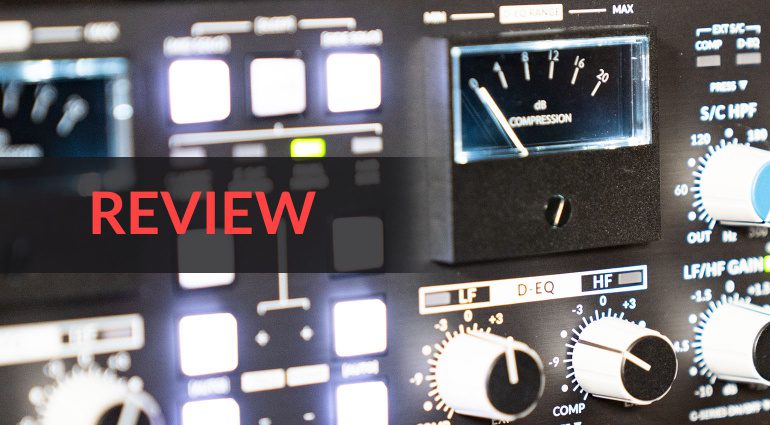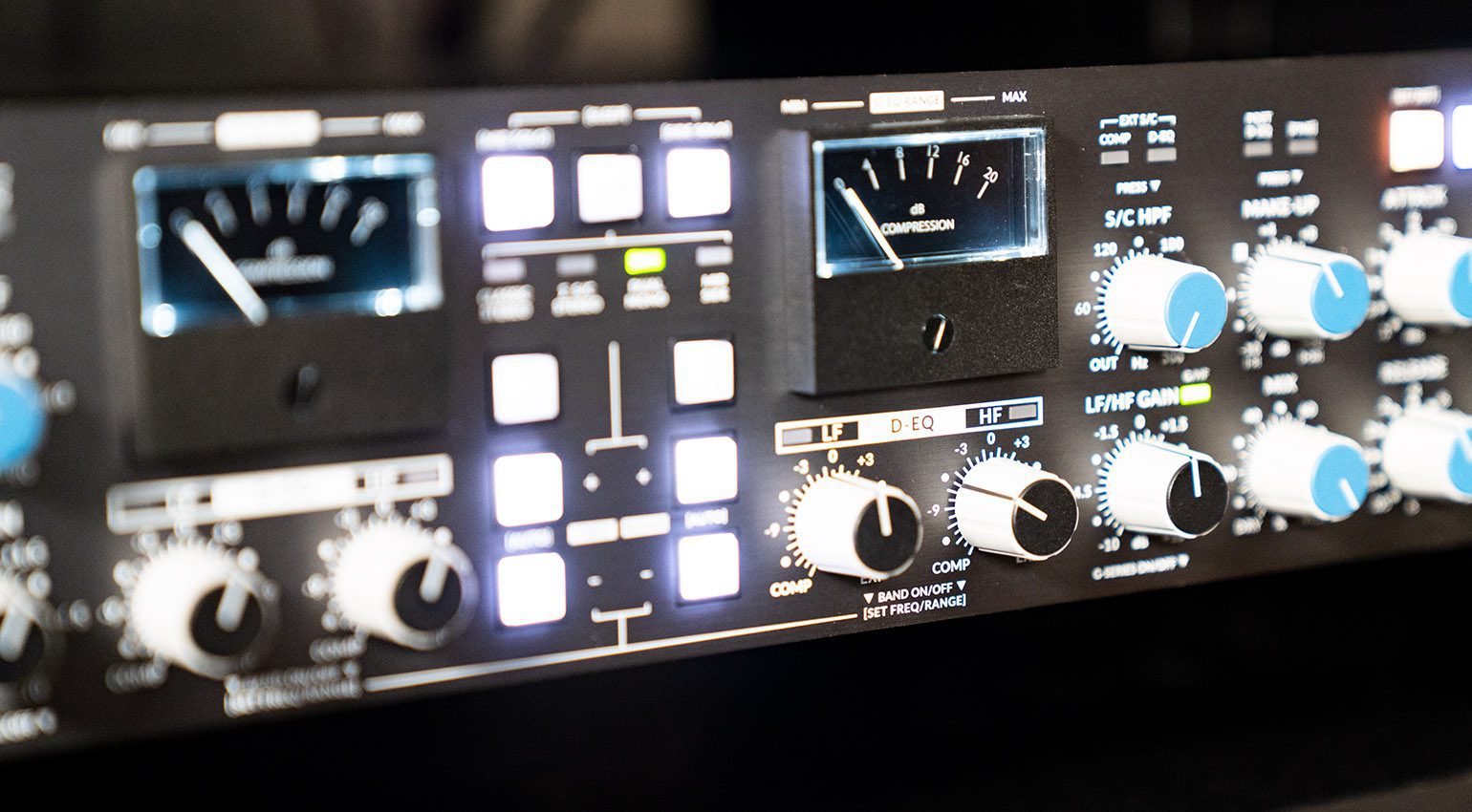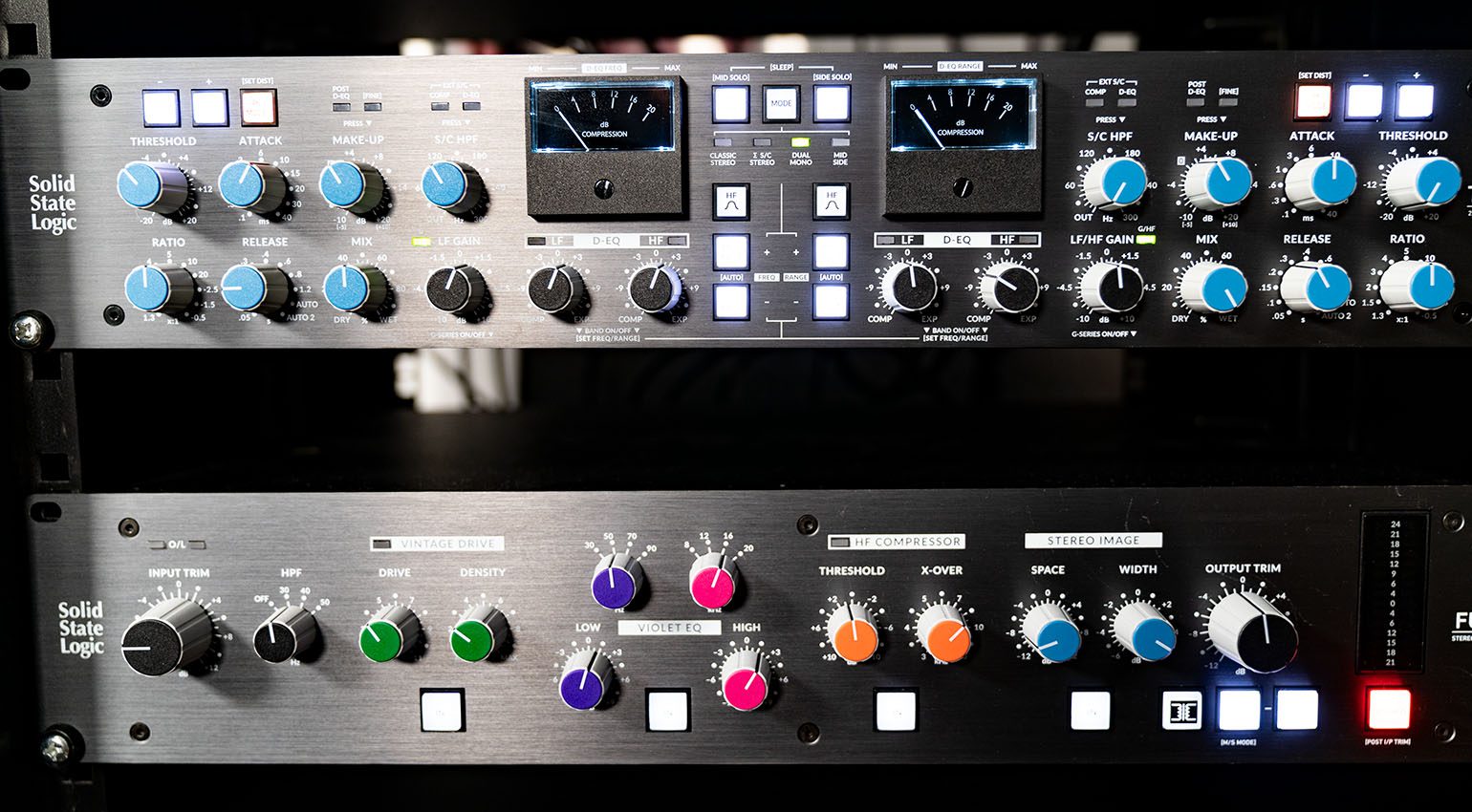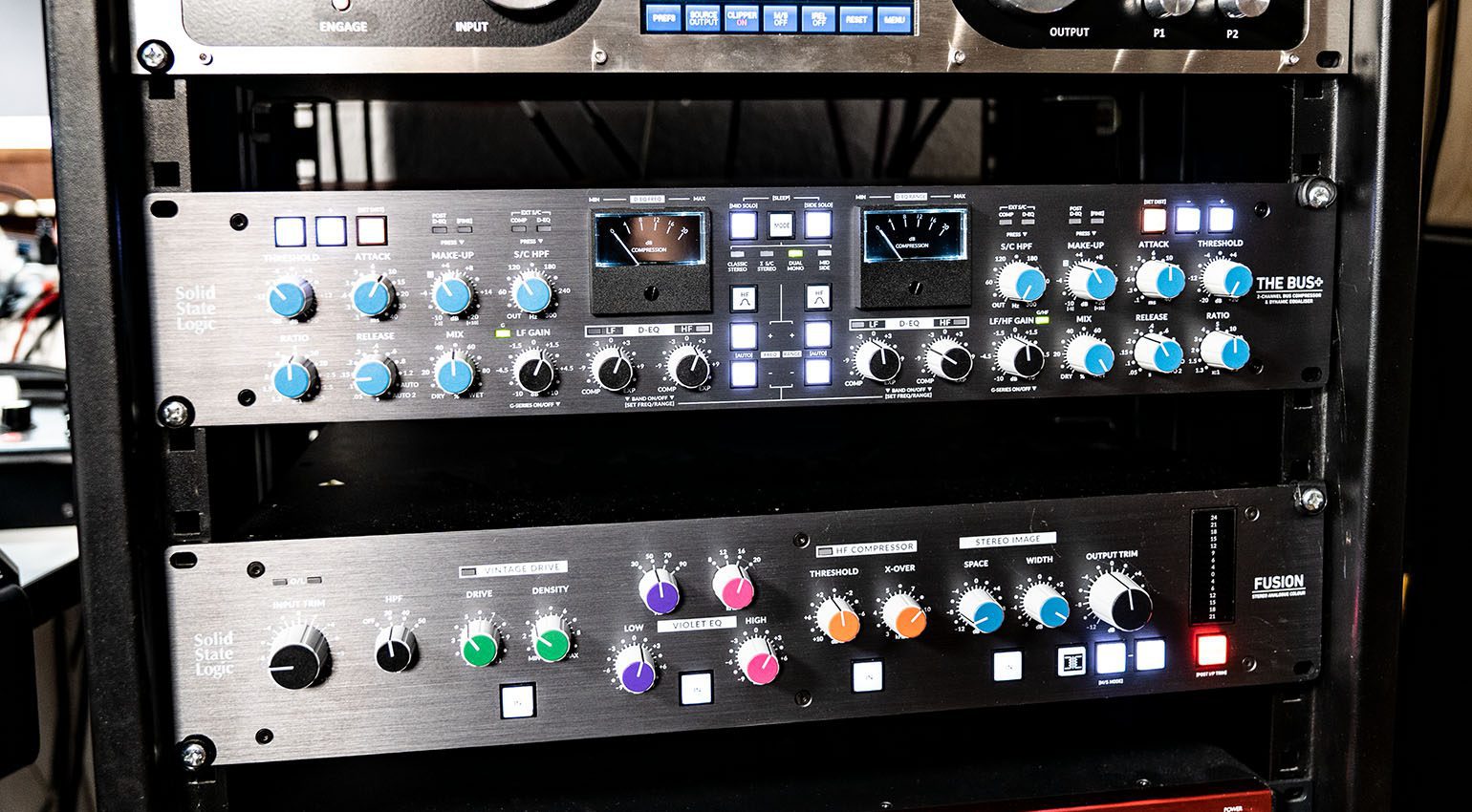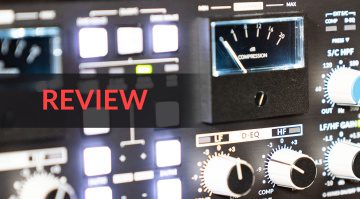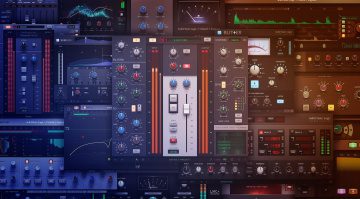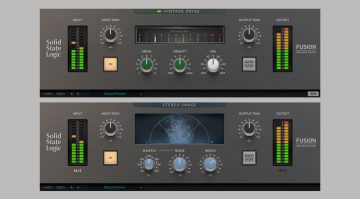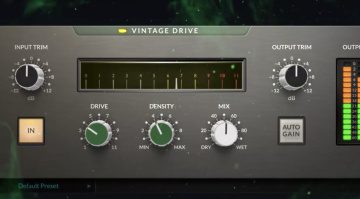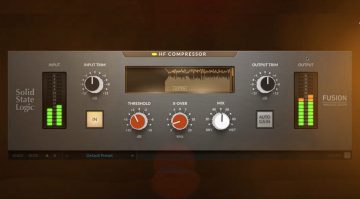SSL BUS+ Review: The next-generation Bus Compressor
About a month ago, Solid State Logic (SSL) unveiled the Bus+, a remarkable evolution of the legendary SSL Bus Compressor in two units of rack space and with a modern design. By expanding upon the original circuit with a host of new features, which work together to deliver impeccable results, SSL has created a processor that could potentially replace several devices in your workflow. Needless to say, we had to try the Bus+ for ourselves. Here’s our review.
Note: This article by Marcus Schmahl first appeared in German on gearnews.de.
SSL The Bus+: Analog sound meets digital control
The SSL Bus Compressor made its first appearance in the iconic SSL 4000 B console in 1976. Ever since then, it’s been a favorite of engineers around the world and is clearly among a handful of devices that have shaped the way music is produced and mixed. In addition to SSL’s own improvements of the design over the years, countless other hardware and software developers have since attempted – successfully or not – to copy the Bus Compressor, and you’ve now got a choice of several hardware clones and software emulations. With the Bus+, SSL has decided to take it up a notch and presents the next generation of the Bus Compressor.
At its core, the Bus+ is a dual-channel Bus Compressor with the functionality and character you’d expect, built around high-performance 2181 THAT VCAs. But that’s only the beginning. The “+” stands for a host of new features designed to make your life as an engineer easier, and deliver even better results. When it was announced, I immediately felt the urge to try SSL’s new do-it-all processor for myself and find out what it can do for my workflow. Unfortunately, I’ll only be able to scratch the surface in this review – there’s just so much going on.
Unboxing the SSL Bus+
Apart from the actual hardware, the box includes a power cable and a quick start guide. The full manual is available as a PDF file. Weighing in at about 7 kg, the compressor feels reassuringly solid and leaves no doubt that it’s filled with lots of analog mojo. The front plate is covered in buttons and rotary knobs. Each channel offers no less than ten knobs (some of which have a push feature), six illuminated buttons, and a large gain reduction meter, which is also used to set the D-EQ frequency. Three additional buttons take care of the overall configuration of the device (channel 1/2 in, operating mode).
The fact that the power switch is located on the back next to the AC input is proof that this is a device meant to be centrally switched with the entire studio. In addition to XLR inputs and outputs, each channel is equipped with an external sidechain input and a send output that loops the input signal through to other devices.
While SSL says that it’s best to leave empty units of rack space above and below the Bus+ to ensure proper air circulation, I didn’t notice any excessive heat coming from the unit compared to the other devices in my rack.
The Bus+ in action
I began by connecting the Bus+ to the inserts of my SSL Fusion. After turning the power on, you can hear the comforting clacking sound of the internal relays, signaling that it’s ready for action. What’s very cool is that you can put the unit to sleep by pressing the CH1 and CH2 buttons simultaneously for a couple of seconds, if you’re not going to be using it for a while. This helps to conserve energy and keeps the hardware cool, and it’s something I’d like to see on the Fusion, as well. I then went on to integrate the compressor into my setup (without having read the manual) and began to experiment with it on various audio tracks and the master bus.
And what can I say – it’s awesome! I pulled up a track that I’d recently mastered using another compressor, where I’d resorted to an additional equalizer in order to make up for some of the typical side effects of compression (distortion and a loss of low-end energy). The Bus+, on the other hand, makes short work of these problems without any additional gear, thanks to the integrated dynamic EQ (D-EQ) and the LF and HF gain. This makes for a very quick and efficient mixing and mastering workflow – just what I like!
Four modes
But that’s of course just the beginning. The Bus+ allows you to process audio in classic stereo, summed S/C stereo (which prioritizes mono content), dual mono, or mid/side modes. What’s also very cool is the option to choose from a parallel wet/dry mode (which crossfades from dry to wet), or true “NY-style compression”, which keeps the dry signal at 100% and blends in the compressed signal. That’s what I call versatile!
Moreover, you can choose between feed-forward and feed-back compression at the push of a button. The detection circuit also offers plenty of versatility. You can either use the internal sidechain path with an adjustable high-pass filter or a separate external sidechain signal. This affects the compressor, the D-EQ (LF and HF independently), or both at the same time.
Heaps of character
There’s a reason why so many plug-ins try to imitate that “British” sound, and the SSL The Bus+ lets you choose from several variations of it. The 4K button lets you experience the sound and character (harmonic distortion) of the SSL 4000 console with nine levels of distortion to choose from. On top of that, you can push the LF Gain knob to activate the G-series filter mode (12 dB/oct.).
Built-in dynamic equalizer
The D-EQ is a lot more than an afterthought and has its own controls and buttons on the user interface. This dynamic equalizer with two bands almost acts like a multi-band compressor, which you can use for additional signal shaping before or after the main compressor. It’s probably my favorite feature of the SSL Bus+! The D-EQ lets you choose from two shelving bands or one shelf (Low) and one bell (High). The frequencies and ranges of the two bands are adjustable in 16 or 23 steps, respectively.
In stereo mode, the compressor offers an independent HF Gain control in addition to the LF Gain. This option isn’t available in dual mono or mid/side, which is a pity. I sometimes wished for it in mid/side as a way to emphasize the highs on the sides and highlight the stereo width.
Workflow and sound
The PDF manual reveals a plethora of additional features, which aren’t visible at first glance. Nearly all buttons and controls have secondary (and sometimes third) functions, which you can access by pressing and/or holding the rotary knobs, or pressing multiple buttons simultaneously. Fortunately, all features that you’re going to use on a daily basis are easily accessible, which makes for a quick workflow during mixing and mastering.
In terms of sound, I don’t think I’ve ever used another hardware or software compressor that delivered exactly what I wanted as effortlessly as the Bus+. In some cases, it gave me much more than what I’d hoped for. Needless to say, you should know your way around a compressor and its applications. But the Bus+ is also a great way to experiment and learn about the different aspects of compression. Personally, I’m really impressed by how well the compressor and dynamic EQ work together, which has greatly improved my workflow.
Let the Games begin
Here’s a fun little pastime for when you’re waiting for creativity to strike: SSL’s engineers have integrated a game into the Bus+, which unlocks an additional feature! The Code-Break Master game reminds me of the classic Mastermind board game, where you have to guess the correct combination of colors. You can play as many times as you’d like. Guessing the right combination unlocks the Transient Expander feature. (Hint: There’s also a cheat code if you can’t be bothered to play.) This turns the HF control into a transient enhancer that allows you to emphasize the attacks of your audio signal. Another feature that can potentially save an additional device.
Conclusion
The SSL Bus+ has quickly become an indispensable tool for me. It delivers excellent results quickly, intuitively, and, above all, effectively. Moreover, it combines several essential features in a single unit, which are intelligently interconnected so they can interact in various ways to achieve the desired results.
One thing I’m missing is the option to display the input and output levels on the VU meters – clipping LEDs are all you get. But that might be due to my previous workflow. Another small drawback is that some adjustments and settings are only accessible by switching the power on while holding several buttons on the front panel. On a rack-mounted unit whose power switch is located on the back, that’s not exactly convenient.
But those issues quickly become meaningless in light of the compressor’s impressive versatility and – first and foremost – its excellent sound. I for one don’t want to miss it anymore. If you’ve been playing around with the idea to invest in a new dynamics processor, I highly recommend you give the Bus+ a try.
Price and availability
The SSL Bus+ is available at Thomann* for €2699.

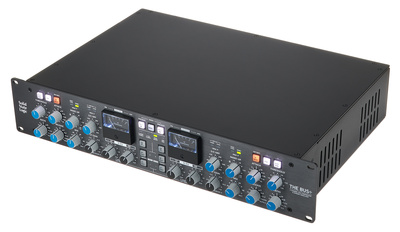
More information about the SSL Bus+
Video
You are currently viewing a placeholder content from YouTube. To access the actual content, click the button below. Please note that doing so will share data with third-party providers.
 5,0 / 5,0 |
5,0 / 5,0 | 